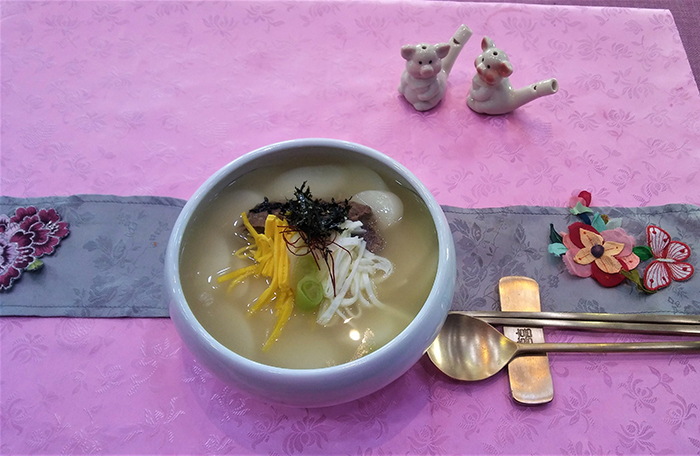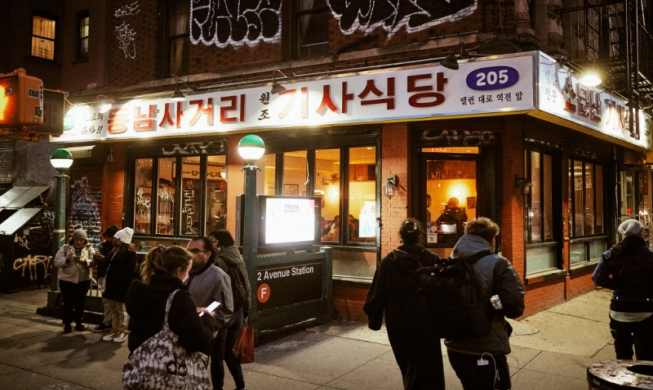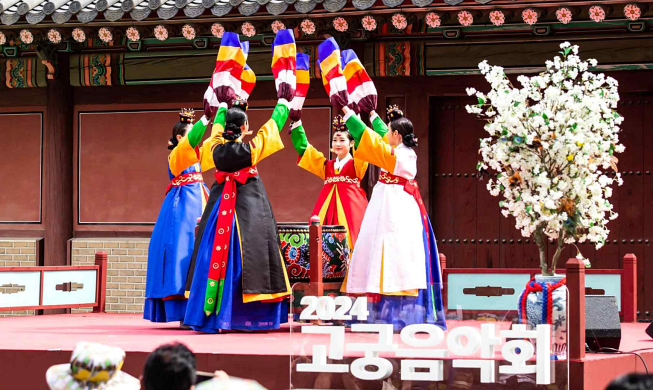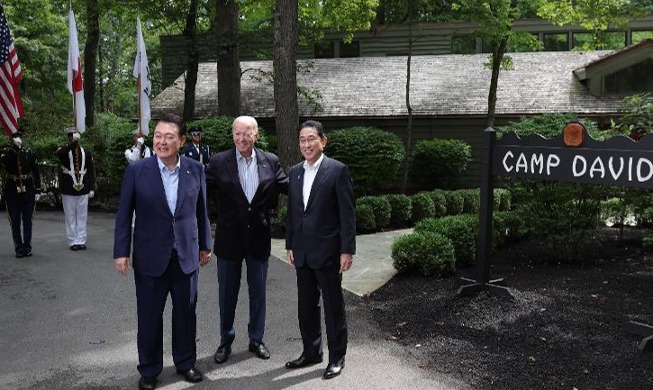-
 Korea.net's 24-hour YouTube channel
Korea.net's 24-hour YouTube channel- NEWS FOCUS
- ABOUT KOREA
- EVENTS
- RESOURCES
- GOVERNMENT
- ABOUT US

View this article in another language
- 한국어
- English
- 日本語
- 中文
- العربية
- Español
- Français
- Deutsch
- Pусский
- Tiếng Việt
- Indonesian

Koreans eat tteokguk (rice cake soup) on Seollal (Lunar New Year). (Wendy Palomo)
By Korea.net Honorary Reporter Wendy Palomo from the Philippines
I recently had a great opportunity to learn how to cook two must-eats during Seollal (Lunar New Year): tteokguk (rice cake soup) and manduguk (dumpling soup). Four Korea.net Honorary Reporters from Tajikistan, Kazakhstan, Colombia and the Philippines were invited to appear on HanaGo’s Lunar New Year episode. We learned Korean cooking from Yoon Soo-ja, director of the Institute of Traditional Korean Food who prepared and spruced up dishes normally considered ordinary in Korea. We four and HanaGo host Lee Hana watched Yoon do her thing, tasted her dishes and learned interesting facts about Seollal cuisine in Korea.
This experience also offered me a timely opportunity to look at how Korea and my home country of the Philippines celebrate the new year.
Celebrations
Filipinos celebrate a new year with a big bang to welcome the first day of the Gregorian calendar on Jan. 1. This major celebration sees families getting together on the night of Dec. 31 for a countdown and waiting until the clock strikes midnight. Some families go out and join crowds for the countdown and see fireworks displays all over town, though the use of fireworks has gotten more limited lately.
The Philippines also celebrates Lunar New Year but the holiday is more commonly known as Chinese New Year. This is no surprise since trade and migration firmly established a Chinese population in the country, with the first Chinatown located in Binondo opening in 1594. Chinese New Year, however, is no match for New Year’s Eve in scale and popularity.
In Korea, however, Seollal is easily far bigger than New Year’s Eve as one of the country’s two biggest holidays; Lunar New Year falls on Feb. 5 this year. Families gather and catch up with each other, but what makes it a truly unique occasion for Koreans is the observance of ancestral rites to pay respects to their ancestors through the ceremony charye. The Seollal celebration is a quieter and more private affair among Korean families.
New Year’s Dishes
Preparing tteokguk and manduguk during the HanaGo episode was a personal learning experience for me, especially after I learned that I’d been cooking manduguk the wrong way.
An interesting fact is that tteokguk is preferred in South Korea while manduguk is the favorite in North Korea on Lunar New Year’s Day. Tteokguk features white rice cake and is preferred in the South since rice is more abundant there. The North’s climate and land make it harder to cultivate rice there, thus its preference for manduguk.
The thinly sliced white rice cake in tteokguk is cut from a long, cylindrical-shaped source. The following is what I learned from the HanaGo experience:
· The long white tteok symbolizes long life in the new year.
· The color white represents cleanliness and purity, so by eating this white rice cake, Koreans believe they can usher in the new year clean and pure.
· Tteok is round and coin shaped to resemble yeopjeon, Korea’s old currency. This symbolizes prosperity in the new year.
In the Philippines, people welcome the new year with noodle dishes like the traditional favorite pancit (Sino-Philippine noodles) or any pasta to symbolize long life and good fortune. Some families serve food made with sticky rice like bibingka (baked rice cake) and biko (sweet rice cake). These dishes represent family unity and the strengthening of familial bonds.
While I was growing up, my mom would gather 12 kinds of fruits to welcome the new year and make them the centerpiece of our dinner table. These fruits should preferably be round or oval as they symbolize abundance for each month of the new year.
New Year Rituals
In the Philippines, wearing anything round is believed to attract luck in the new year. Thus some Filipinos wear polka dots as this signifies money and fortune. Children gather as many coins as they can in their pockets or shake their piggy banks as loud as they can as the clock strikes midnight. This is also believed to bring good fortune. Adults do this, too, like my mother and my mother-in-law.
Another quirky Filipino ritual is for children to jump as high as they can when the clock strikes midnight, according to an old superstition that says this practice done on New Year’s Eve makes children taller. I used to do that when I was a kid. Though I’m now an adult, I tell my sons to jump every New Year’s Eve. I guess some things never change.
wisdom117@korea.kr
* This article is written by a Korea.net Honorary Reporter. Our group of Honorary Reporters are from all around the world, and they share with Korea.net their love and passion for all things Korean.
Most popular
- First Korean-style 'taxi driver' diner opened in New York
- 76 national heritage sites to allow free admission from May 15
- Foreign tourist editions of unlimited transit card coming in July
- Africa's appeal on full display at downtown festival in Seoul
- UK univ., KCC in London host Korea Day event in Sheffield













